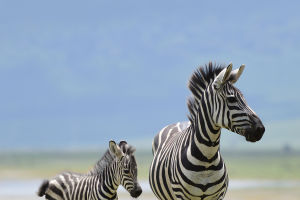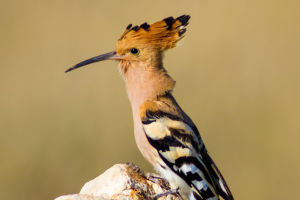The twisted-horn goat is by far the largest and is named for its very special large spiral-shaped horns.
Its entire body is yellowish brown, but the hair on the chest and neck is white, and the hair on the chest of male goats can exceed the knees. The horned goat lives in high mountainous areas and can live at altitudes of more than 5,000 meters.
The horned goat is the largest of all goats, reaching a length of 132-165 cm, which is equivalent to the height of an adult, and it can maintain a height of 65-115 cm.
Unlike other goats, both females and males have long, screw-shaped horns and long white hair on their chests, but males have larger, thicker horns and denser, longer hair.
However, the seemingly large and heavy horns cannot be used against predators because they are too bulky, so they can only be used as a tool to attract the opposite sex during the breeding season.
The horned goat prefers to live in groups, with a population containing at least nine goats, although most are females and most males are loners.
Male goats attract females during breeding fights, and the reason they form such complex spiral horns is to show their greater strength by constantly twisting and pushing their opponents down during fights.
They do not settle in one place every year, but mostly migrate short distances, with the older goats leading the way.
The horned goat is not easily spotted when lying on the rocks because its coat is similar to the rocks, but sometimes snow leopards, golden eagles, and wolves can be a great threat to the horned goat.
Twisted-horn goats choose to rest on rocks also because they can protect themselves by their geographic advantage in steep places.
The twisted-horn goat can walk freely on the cliff face. s Although they are huge, their limbs are very flexible and can run quickly on the rocks. Whenever it encounters danger, it runs towards the cliff face.
The twisted horn goat has a unique appearance and lives on top of the snowy mountains and was once called a "sacred animal" by some locals.
However, due to poaching and other reasons, the horned goat has become an endangered wild animal, and since 1985, international wildlife organizations have spent a long time breeding horned goats, until 2014, the number of horned goats exceeded 3,500.


